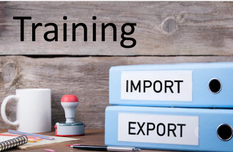 Training is critical to a successful trade compliance program. A solid compliance strategy, supported by effective training, helps staff do their jobs confidently and correctly. This article provides some options to consider as you look for ways to provide overview, role-based, and refresher training to staff supporting trade activity. Whether you are responsible for all trade training at your organization, supporting your team, or an individual needing knowledge, this article provides direction to get you started. If your company imports or exports goods, leverages free trade agreements, or enters into global contracts, you likely have various staff involved in these activities—staff that require different training depending on their particular role. Most large organizations can easily identify ten to twenty unique roles supporting trade activity. While you can use general overview training for all these roles, most will also require topical training that addresses the learning objectives they require to successfully execute their role. Creating and maintaining all this training internally is a daunting task and would require dedicated full-time resources. But there are options that support getting the right training to the right people. Start by Understanding Your Audience As with all training delivery, we first need to answer some questions to understand what’s required.
Getting Training Content There is a great deal of training content for international trade available online. Much of this training is available through government sites and is free. I will provide follow up blog posts with links to recommended import and export training. Overview Training – Create Your Own! The challenge with most “canned” training is that you must take what you get and can’t add in your own messaging. That’s why I recommend custom training to support your largest audience. This includes high level overview training for all employees for guidance on imports, exports, sanctioned countries and individuals, antiboycott, and potential penalties. This training can be anything from a recorded presentation to instructor-led sessions. The benefit of custom training is that you can include content that matches your activity and also tell staff where to find trade policies and other corporate resources. My suggestion is to start with a canned overview course that you can edit and make it your own. For example, I provide companies with the source files (PowerPoint, Captivate, Storyline, etc.), so you can quickly add in unique messaging and references to your resources. I strongly recommend adding a video recorded message at the beginning from your CEO, high-lighting the importance of the training and enforcing that the company has trade policies that are part of the employee code of conduct. Employees are much better engaged when they view training that looks like it comes from the company. Most overview training for import or export can be delivered in 10-15 minute modules. They can support multiple languages and are easily delivered globally to staff. Role-specific Advanced Training Once you define a training matrix with a role-based audience analysis for your company, you can identify all of the required training content. This road map lets you quickly create and maintain the training. Your trade compliance team members are experts in their areas and have generally gathered training from online sources, local trade groups, or consulting companies, but this does not make them good training developers. The down-side of having your subject matter experts create training alone is that it takes longer, is poorer quality, and may not address the instructional needs of adult learners. I recommend partnering trade SMEs with an instructional designer (ID) and course developer, to quickly develop content. Even if you have to hire ID and course developer contractors, you save money by not wasting your staff time doing something outside their expertise. Keep Training Fresh Don’t make people complete the same annual training course over and over. Trade rules and trends are constantly changing and it’s worth including new content to train and engage your staff. Make sure you understand what’s new and relevant to your trade activity and incorporate it into your annual refresher training. Use the update to introduce new team members, resources, and company trends. It’s not hard or expensive to refresh training content and your staff will appreciate the effort. Conclusion Use industry best practices for training development to get the required trade training in place quickly. Leverage instructional designers and course developers to augment your trade experts to build complete and effective training that engages your staff and drives trade compliance.
0 Comments
Your comment will be posted after it is approved.
Leave a Reply. |
AuthorAdam Palmer - helping importers and exporters remain compliant. Archives
November 2021
Categories |
Copyright Trade Compliant Inc 2023

 RSS Feed
RSS Feed